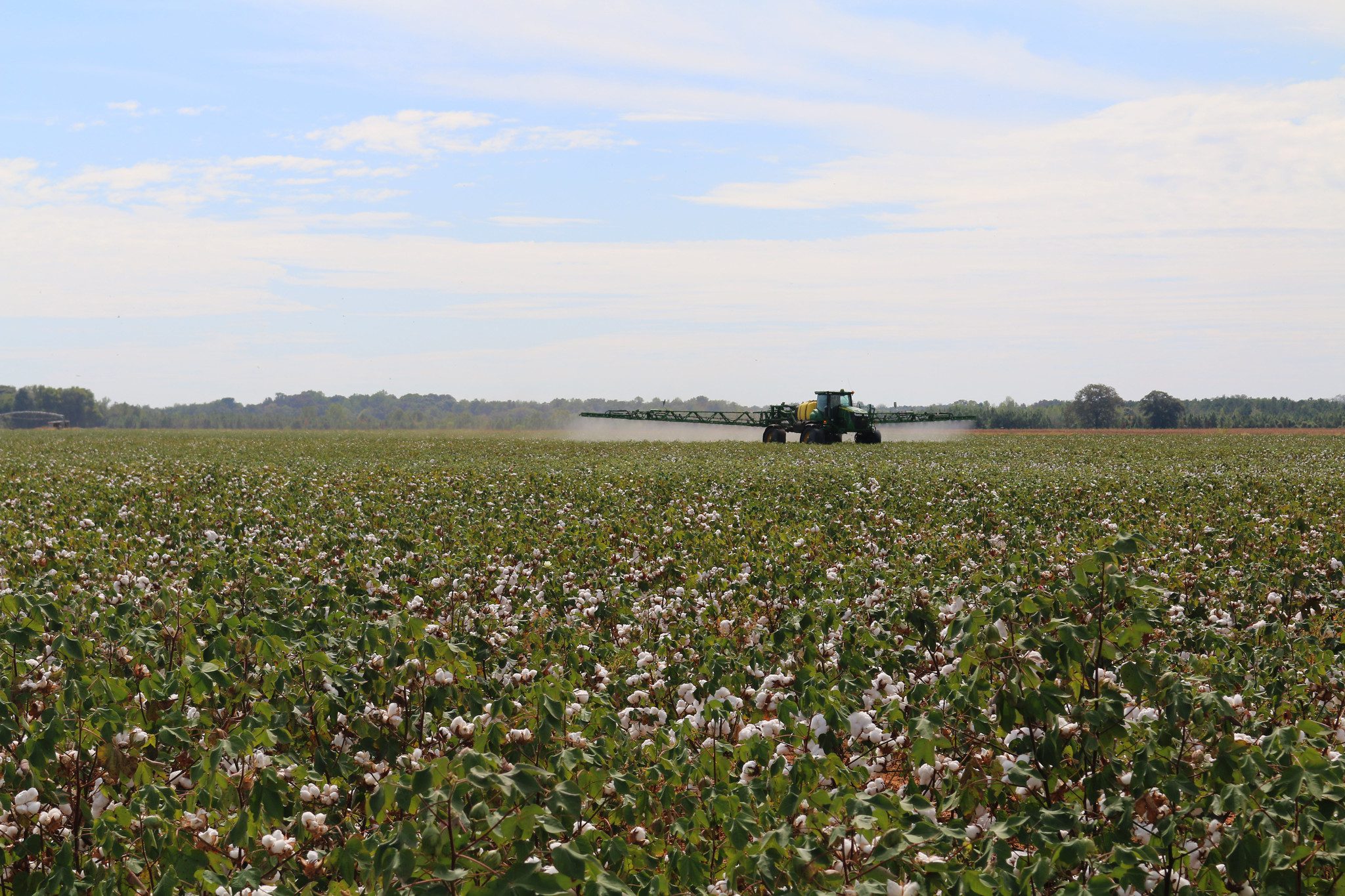Agronomic Crops

The Alabama Cooperative Extension System began conducting Cotton Scouting Schools in 1959. Historically, these events were done on the main campus at Auburn University over the course of several days. Today, scouting schools are conducted as half-day events in four or more locations across Alabama. While the locations have changed, the purpose remains the same: to train people (scouts) in the best ways to detect and quantify insect pests in the field.
With that in mind, what exactly is a “cotton scout?” Simply put, a cotton scout is someone that monitors insects in the field on a regular schedule to provide farmers with information to make the most educated decision on when pests are at damaging levels and insecticide applications are needed. Who can be a scout? Anyone with proper training can scout cotton. Many are independent consultants, which provide farmers with a full range of farming and crop management expertise. Some are field advisors, that work for a retail or co-op store and provide scouting as a service to their customers. There are many others who just consider themselves scouts who are perhaps high school teachers or work in other professions looking for something to do in the summer.
Cotton insect management is different from other aspects of cotton production. While some things can more or less be done on a calendar, insect populations and pressures change from week-to-week and often field-to-field. In 2023, Alabama farmers will plant ≈20,000 cotton fields in approximately 60 counties. To maximize the economic return on insect pest management, as many of these fields across the state as possible should be scouted. The Alabama Extension Cotton Entomology Program recognizes the importance of not just having a scout but having a trained scout that understands the most up-to-date scouting and monitoring techniques. Extension estimates that more than 9,000 scouts have attended and been trained over the last 63 years. These scouts have helped Alabama farmers fight boll weevils, tobacco budworms and bollworms, and various other pests over the decades.
Attention Shift
In the past 25 years, major shifts in the cotton industry have influenced the insect pest spectrum. The eradication of the boll weevil resulted in a major change, from 12 or more insecticide applications per year to 4 or 5 applications. Additionally, the introduction of genetically altered (GMO) Bt cotton varieties, expressing insecticidal activity against caterpillar pests, further reduced insecticide applications and changed cotton scouting systems.
Another change, beginning in 2023, is the introduction of GMO Bt cotton varieties with some insecticidal activity against two of the three main insect pests Alabama farmers face: thrips and plant bugs. As the varieties are adopted this will cause another shift in insect pressures and scouting needs. Insect pest infestations can vary by cotton planting dates, weather, cotton varieties used, other crops in the landscape and many other factors. In addition to the key insect pests, thrips, plant bugs and stink bugs, secondary pests, like spider mites, aphids, grasshoppers, three-cornered alfalfa hoppers and others require monitoring and management decisions each year.
Topics to Consider
There are several key points to consider when scouting cotton fields. Just a few of the questions that will be addressed during the 2023 scout schools include:
- How do cotton varieties and technologies change scouting methods and treatment decisions?
- How does cotton growth and development alter sampling techniques and pest complexes?
- Does the time of year alter chemical decisions for plant bugs?
- How does the change in crop acre distribution affect pest pressure in cotton?
- How much do plant bug populations increase over a generation (≈20 days)?
- Why is the 3rd-6th week of bloom the most important for stink bug control?
- What size boll should be sampled for stink bugs and why?
- At what point in the season are beneficial insects the most important, and at what point do they reach the level of diminishing returns?
- When to terminate insect control in cotton?
In addition to teaching the latest cotton insect pest identification and scouting techniques, the scout school programs also offer information on beneficial insects, cotton agronomic management, peanut management, and soybean insect identification and scouting techniques. Each year attendees can receive pesticide applicator and certified crop consultant points as well.
Cotton Scout School Locations and Crop Focus
Southeast Alabama — Cotton and Peanut
June 6
Wiregrass Research and Extension Center
Headland, Alabama
Central and West Alabama — Cotton and Soybean
June 8
Autauga County Agricultural Center
Autaugaville, Alabama
Tennessee Valley — Cotton and Soybean
June 14
Tennessee Valley Research and Extension Center
Belle Mina, Alabama
Northeast Alabama — Cotton
June 22
McCord’s Fire Station #1
1150 County Road 157
Centre, Alabama

